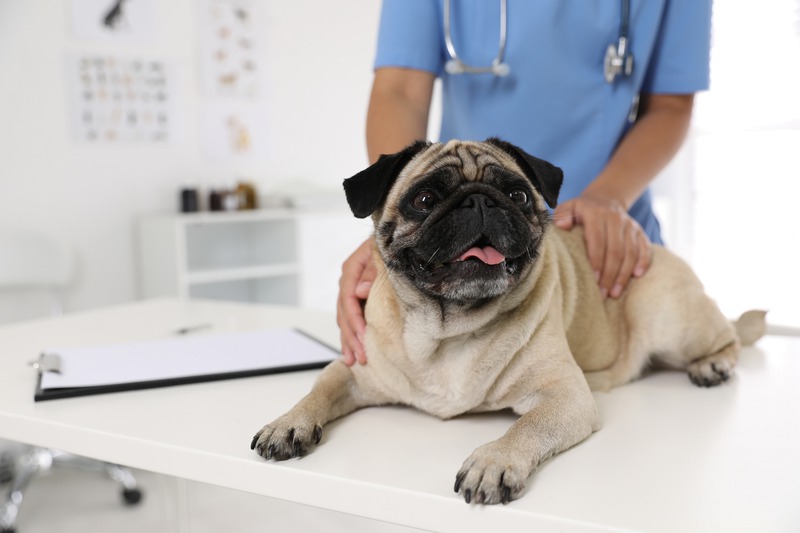Taking your beloved furry friend to the vet for a routine exam can sometimes feel like navigating uncharted territory. You might wonder about what happens during the check-up and why certain tests are necessary. Understanding what to expect can ease your worries and help you prepare both yourself and your pet for the visit.
The Significance of Regular Vet Visits
Regular vet visits are an essential part of maintaining your pet’s health. They allow for early detection of potential health issues and ensure that your pet is up-to-date on vaccinations and parasite prevention. But what exactly takes place during these visits? Grab a comfy seat, imagine you’re in the waiting room, and let’s walk through it together.
What Happens in a Pet Routine Exam
1. Initial Check-In and History
Your appointment usually kicks off with a review of your pet’s medical history. You’ll be asked about any recent behavior changes, diet, exercise habits, and any specific concerns you might have. It’s your chance to share every niggle or oddity you’ve noticed since your last visit.
2. Physical Examination
The heart of the vet visit is the physical examination. Your vet will look, listen, feel, and sometimes even smell to evaluate your pet’s health. Here’s a sneak peek at what they check:
-
Weight and body condition: Checking for any significant weight gain or loss since the last visit.
-
Coat and skin: Inspecting for lumps, bumps, or skin irritations.
-
Eyes, ears, and nose: Looking for discharge, redness, or abnormalities.
-
Mouth and teeth: Assessing oral health for signs of dental disease.
-
Heart and lungs: Listening with a stethoscope for any irregularities.
-
Abdomen: Gently palpating to detect pain or swollen organs.
-
Limbs and joints: Checking for range of motion and signs of discomfort.
-
Vitals: Measuring heart rate, breathing rate, and temperature.
This thorough exam helps paint a complete picture of your pet’s health and uncovers issues you may not have noticed.
3. Veterinary Laboratory Testing
Sometimes, your vet might suggest a deeper dive into your pet’s health with diagnostic tests. Don’t worry; this is standard procedure, even for seemingly healthy pets. Most often, these are conducted at a veterinary laboratory in Egg Harbor Township, where everything from blood tests to urinalysis and X-rays can be performed. These tests can catch diseases early on, which is key to successful management and treatment.
4. Vaccinations
During your visit, your vet will likely discuss vaccinations. They’re vital in protecting your pet against a variety of diseases and are usually tailored to your pet’s lifestyle and the local area’s risks.
5. Parasite Prevention
Another topic on the agenda could be parasite prevention. Your vet will check your pet for fleas, ticks, and mites, recommend appropriate preventatives, and discuss the signs of infestation to watch for at home.
6. Diet and Nutrition
Expect some chatter about your pet’s diet. A balanced diet is crucial for maintaining good health, and your vet can help you navigate the maze of pet food options to find the best fit for your pet’s age, size, and health status.
If you’re the proud parent of a puppy, the dog exam at Newkirk Family Veterinarians might include a few breed-specific checks and nutritional needs. Different breeds have different vulnerabilities, and a tailored approach ensures nothing slips through the cracks.
7. Exam Results
What happens after all this probing and prodding? Your vet will compile all the findings, discuss them with you, and create a personalized care plan for your pet. If any issues arise, they’ll go through the next steps, whether that’s medication, lifestyle changes, or further testing.
If your vet discovers something outside their general practice scope, they may refer you to animal internal medicine specialists. These experts dive deep into complex cases, using advanced diagnostic methods to understand and treat intricate health puzzles your pet may be facing.
8. Special Attention for Senior Pets
Older pets might get extra scrutiny. Age brings its own set of challenges, and senior pets require more frequent monitoring to keep them comfortable and healthy as they enjoy their golden years.
9. Behavioral Assessments and Advice
Don’t be surprised if your vet takes a moment to discuss your pet’s behavior. They might offer guidance on training, socialization, or even how to cope with anxiety and phobias, ensuring your pet’s mental health is just as prioritized as physical well-being.
10. After the Appointment
Once your pet’s exam is complete, you’ll likely head to the reception desk to handle payment and schedule any follow-up appointments. Remember, routine exams are all about prevention, so sticking to the recommended schedule is key.
Final Thoughts
Remember, these routine exams are the frontline defense in protecting your pet’s health. They’re an opportunity to catch issues early, manage ongoing health conditions, and keep your pet living their best life. Don’t hesitate to ask questions and bring up any concerns with your vet – after all, you’re doing this together.

